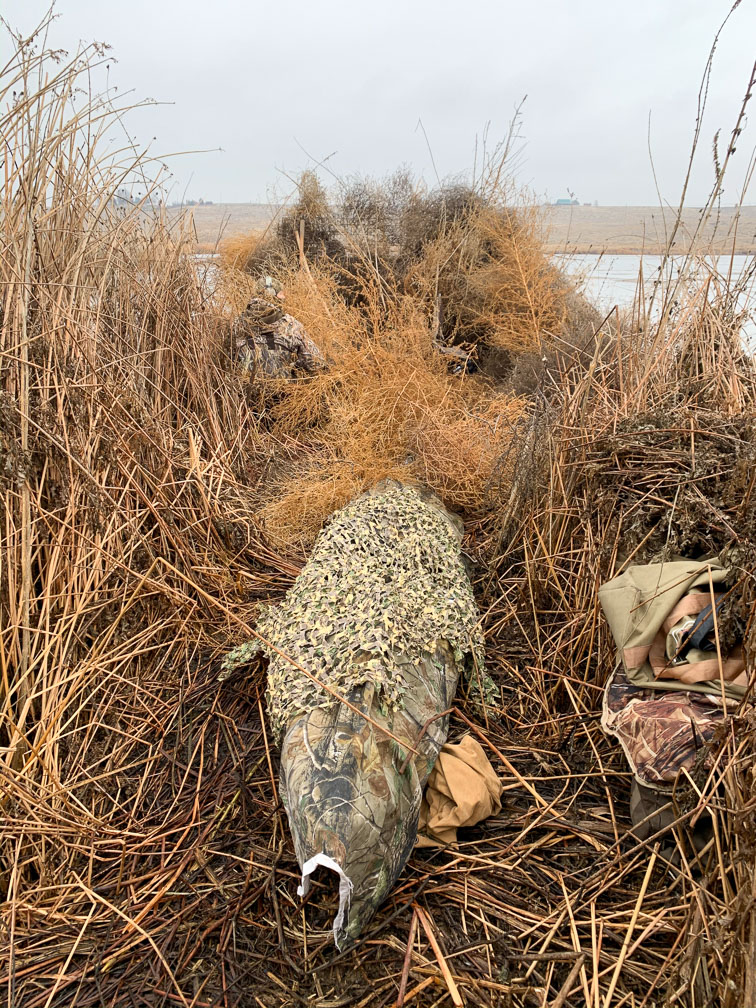This December 7, 2019 hunt was the first of a two-day hunt for us at McNary National Wildlife Refuge and although we didn’t bag as many birds we wanted we did manage to have some adventures on the ice.
Excitement and Eats
We were really looking forward to this trip. Our group tries to make it out to McNary 2-3 times a year and we normally pull in a lot of birds and bring back plenty of stories.
Our group features some avid foodies and it turns out that the Tri-Cities offers some pretty decent nosh – dare I say better than my home base of Vancouver, WA. (I think Portland Metro pulls the best chefs and Vancouver is stuck with a lot of chain restaurants and bad Chinese.) We had a great dinner in Richland at The Bradley the night before the hunt with our favorite dishes being the Ponzu Pork Belly and the Curry Chicken. Definitely worth a visit.
Breaking the Ice
Tim had the 24th pick on this Saturday hunt but not many folks showed up for the draw, which was an ominous sign. The ice was thick, said the locals at the checkstation. Sure enough, the ponds next to the station were covered with ice and devoid of waterfowl. We ended up picking 5th or 6th and decided on Blind 5, mostly because the northern blinds on the refuge seem to be doing MUCH better than those in the south. There must be something wrong with blinds 15, 16, and 17, as they typically hunt really well. But this year they’ve been pulling much lower numbers.
Once we made it to Blind 5 we got a closer look at the ice. Fortunately, a couple of days of slightly warmer weather had softened it. The people who hunted Blind 5 on the previous Wednesday had left enough of a hole in the ice that all we needed to do was expand it, doubling its size by breaking large sheets of ice and pushing them underneath the adjacent ice.
Getting An Advantage
Our previous trip to McNary Blind 4 taught us we needed an advantage over other blinds. During that Blind 4 hunt, the guys across the slough in Blind 11 stole a lot of ducks from us with their pull-string wing duck on a windless day. For this hunt, we brought our own pull-string wing decoy and set up a multi-duck jerk rig. When you can’t beat them, join them.
For decoys, we set out two groups of mixed ducks, one group on each side of the water we had opened in the ice. Sure enough, even with low number of birds, with the wing duck and constant calling we managed to pull a good number of birds away from Blind 6 and towards us. It helped, too, that something in 6 was spooking the birds when they approached the blind.
This day didn’t feature a lot of ducks and those we saw were very reluctant to finish. I suspect these birds had been milling around the area for a couple of weeks. We ended up only taking 8 birds (6 mallards, a canvasback, and a goldeneye), which is a slow day at McNary.
No Dog, No Problem
Because none of us have the support at home to get a hunting dog, we bring a kayak to McNary. Sucking mud and deeper water can make retrieves very trying, so a dog or small boat is almost required here. You can get away with not having either, but you’ll need to be very disciplined in your shot selection and will want to let the passing birds keep flying.
That kayak turned out to be very helpful on the ice. It could be used as a makeshift icebreaker, allowing us to make channels to duck we downed on the ice, which was too thin to support someone (or even a dog) walking on it. But it made for some sketchy retrieves, threatening to topple those who took to the water in it. We even got a chance to help the guys in Blind 6 retrieve an ice-bound duck that their dog couldn’t get. In turn, they were able to find a drake mallard that dumped into the high grass behind the blind.
The Bottom Line
This hunt showed us that persistence pays off in duck hunting, whether you’re fighting the ice, retrievals, and even reluctant ducks. Change it up and don’t give up.

